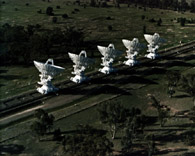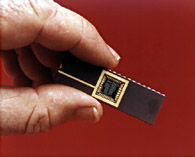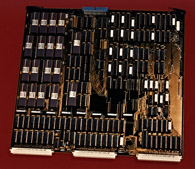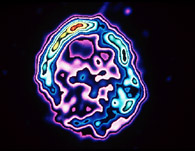
Australia Telescope
1988
advanced radiotelescope
When you think of telescopes it's usually the optical type, the type you look through to see light from the stars. But the Australia Telescope, opened in 1988, is actually a number of linked radio antennas which detect radio waves coming from stars. Computers process the information and transform it into images.
The system links groups of antennas 300 km apart in Parkes, Culgoora and Siding Spring in NSW. This creates a gigantic collecting area, increasing the amount of 'space' that scientists can investigate.
Each antenna sends over two billion bits of information every second to a control centre, where specially designed microchips combine this information and process it for computer editing and mapping. The computers have to have custom-made large-format integrated circuits to process the enormous amount of data. They were made by Austek Microsystems in South Australia.
This sophisticated information processing system allows the Australia Telescope to detect many different kinds of radio sources in space, and has made it the most versatile radio telescope in the world. It has allowed Australia to continue to be a leader in radioastronomy, a position established after World War 2 when research teams that had contributed to the development of radar turned their attention to the stars.
Who Did It?
Key Organisations
CSIRO Division of Radiophysics : R&D, design, operation
Key People
Bob Frater : project director
Bruce Thomas : antenna design team leader
Further Reading
Inventive Australians
Ron Cull
Longman Cheshire, Melbourne, 1993, pp 105-107.
Links
Australia Telescope National
Facility
Melbourne
Planetarium at Scienceworks Museum
Sydney Observatory
Questions & Activities
Australia Telescope
|













